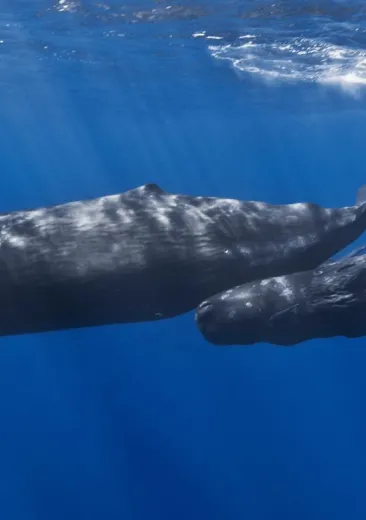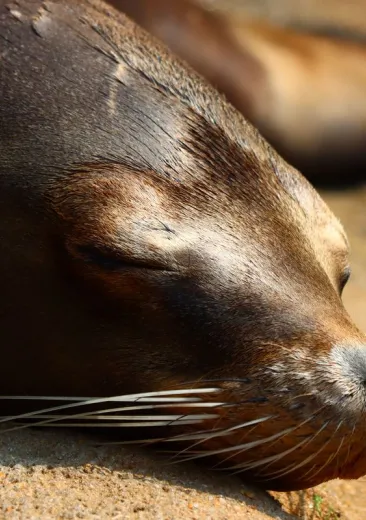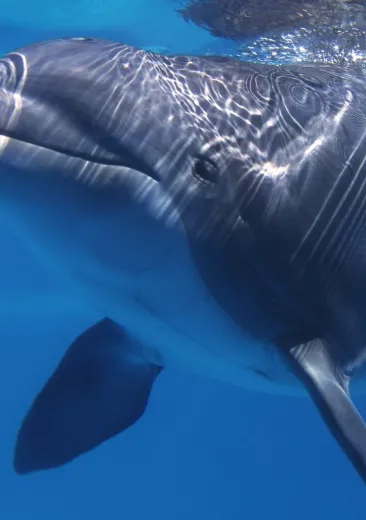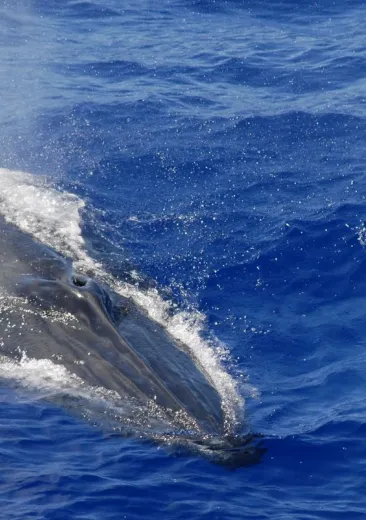An animal presented virtually in the film of the immersive experience in the "In the Eye of the Climate" exhibition.
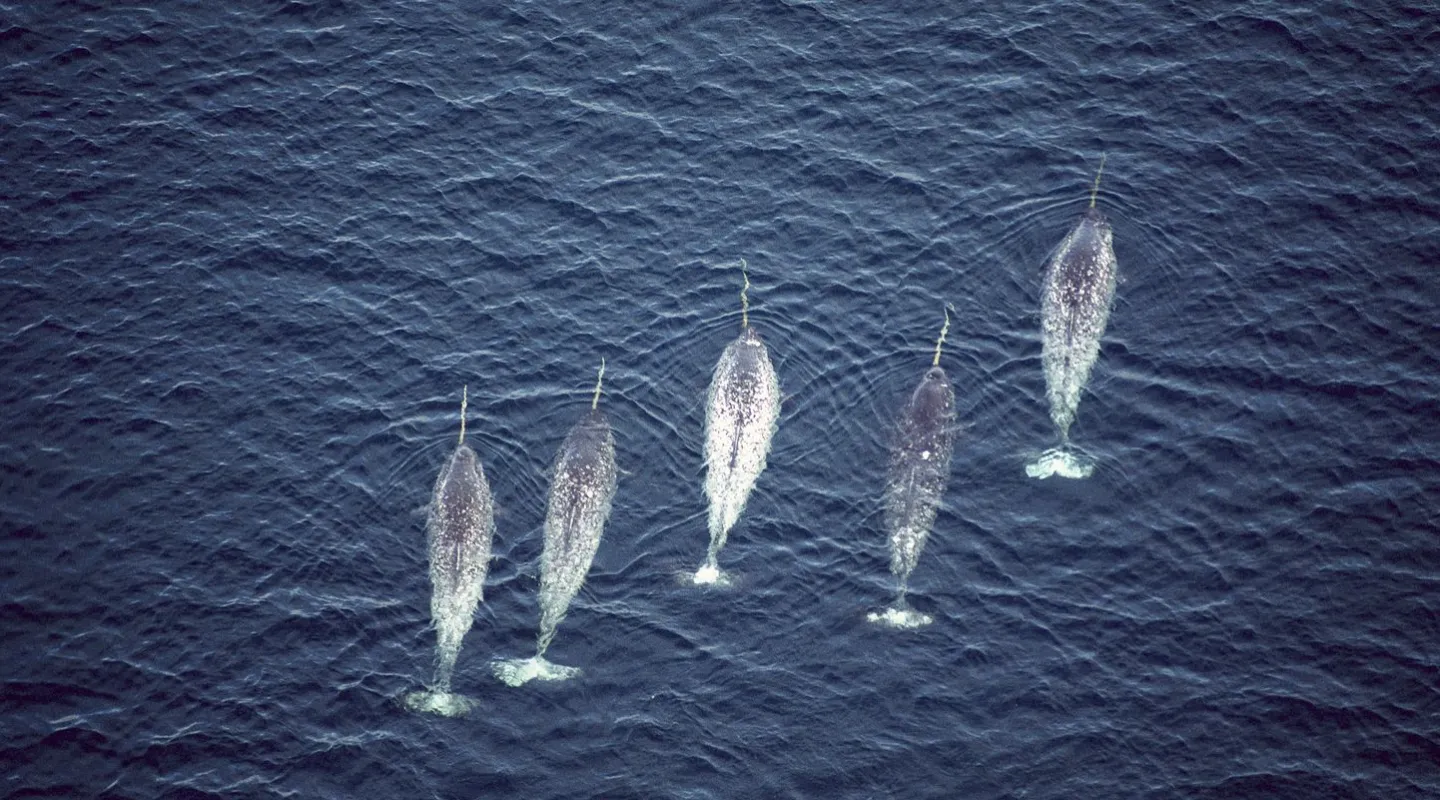
Narwhal
Virtual animals
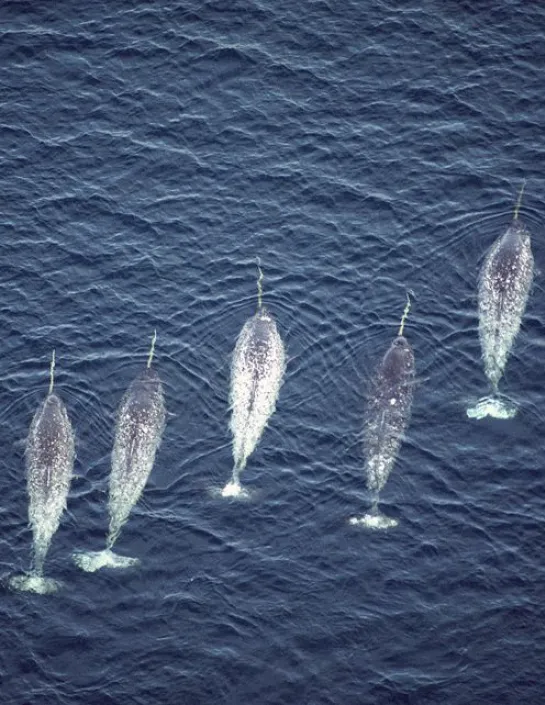
Identity card
Narwhal
- Scientific name:
- Monodon monoceros
- Family:
- Monodontidae
- Class:
- Mammifère
- Phylum:
- Chordata
- Year of description:
- Linnaeus, 1758
- IUCN Status:
- Least Concern
- Distribution:
-
Arctic Ocean - Canada (Baffin Bay and Hudson Bay), Greenland, Norway and Russia, between 65 and 85° northern latitude.
- Habitat:
-
Deep waters of the Arctic Ocean
- Size:
Up to 4.7 m (without the tooth) for males, up to 4.2 m for females.
- Diet:
-
Pelagic fish such as polar cod or Greenland halibut, squid, shrimp and benthic animals.
- Longevity:
25 to 50 years
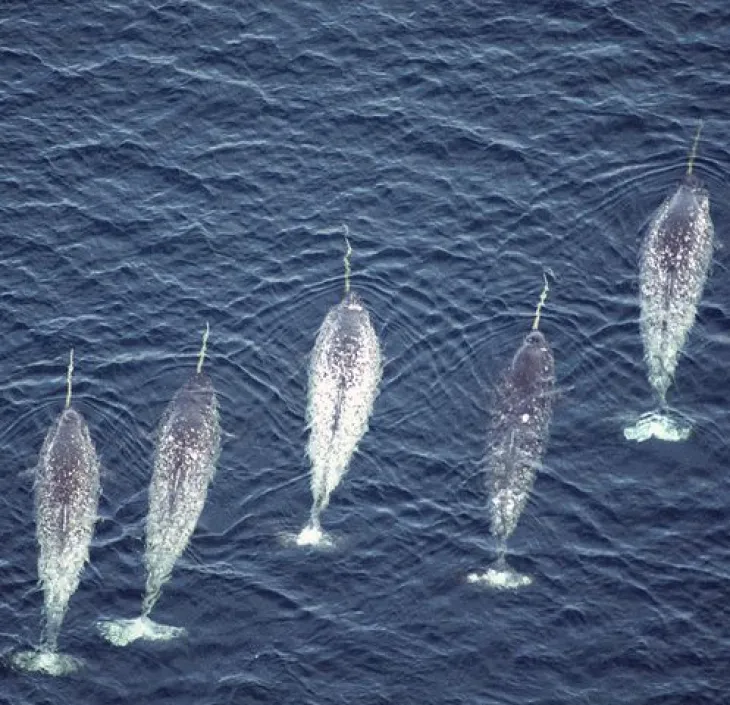
Centuries ago, this tusk was sometimes sold as being that of a unicorn.
The narwhal's tusk acts as a sensory organ. Its millions of nerve endings allow it to sense in real time the pressure, salinity and temperature of its environment. The tusk also acts as an antenna that the narwhal uses to detect both predators and its food.
DId you know?
Where is the animal to be found?
The narwhal lives in the deep waters of the Arctic Ocean down to a depth of 1500 metres. It swims under the ice and pack ice and likes to roam around and rest on the surface. In summer, it prefers coastal areas where the water depth is between 1,000 and 1,500 m.
How can it be recognised?
With its small head and stocky body, the narwhal is an atypical cetacean characterised by a spiral tusk. This tusk, which is actually the left tooth of males, grows after birth and can measure up to 2.7 m and weigh 10 kg. Occasionally, a female may have a tusk, but in this case it will measure less than 2 m.
What is distinctive about it?
In terms of what this appendage is used for, one hypothesis would be that this tooth acts as a sensory organ. Its millions of nerve endings allow it to sense in real time the pressure, salinity and temperature of its environment. The tusk also acts as an antenna that allows the narwhal to detect both predators and its food.
Threat and protective measure
The main predators of the narwhal are humans, who hunt them for their meat and ivory tusk, as well as killer whales and polar bears. Some Arctic coastal peoples, such as the Inuit, have the right to continue hunting narwhals using their traditional methods for food. This hunting is done within the quotas set by the International Whaling Commission.
Where can I find it at Nausicaá?
IN THE EYE OF THE CLIMATE
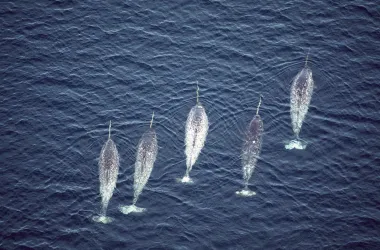
Marine Mammal
The Ocean Mag
Browse through our Ocean Mag
A la une
Nausicaá forum on the deep sea
Faced with the threat of deep-sea mining, we must join forces to protect the deep seabed!
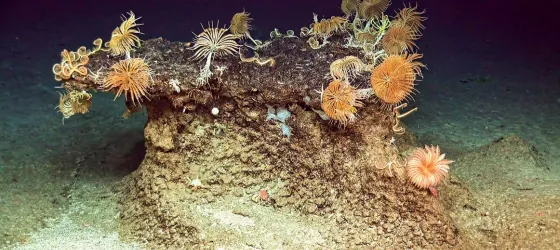
Article
What is the water column?
What lies beneath the surface of the ocean?
Article
What do fish look like in the water column?
Depending on whether they live in open water or on the bottom, fish in the water column have a morphology adapted to their living environment.
